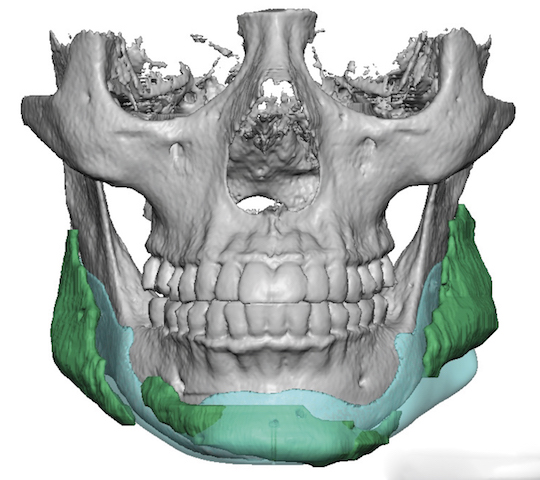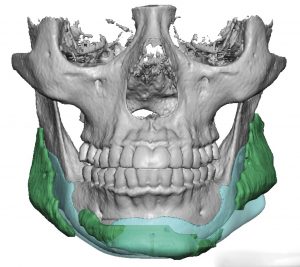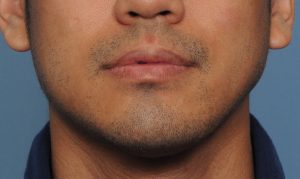Background: The historic approach for total jawline augmentation is the use of standard chin and jaw angle implants. With a large array of implant styles and sizes, improved jawline definition can always be obtained. While most patients understandably focus on how much jawline improvement will be obtained, the use of standard implants poses a potential issue which is not initially apparent….augmentation asymmetry.
With every facial implant placement there is always the risk of asymmetry. This, of course, becomes magnified when three independent implants are being placed. It is always important to remember that with standard implants they are of a generic shape that fits the ‘average’ facial bone for which it is designed. This does not mean they are always a good fit for everyone.
When faced with asymmetry in standard chin and jaw angle implants, the question becomes does one adjust the implants that already there or replace with a custom designed jawline implant? That would depend on the current aesthetic result as well as how many implants are positioned less than ideally?

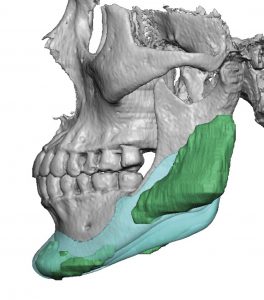
Under general anesthesia his existing submental skin and intraoral posterior vestibular incisions were used to remove his existing implants replace them with the one piece jawline implant.
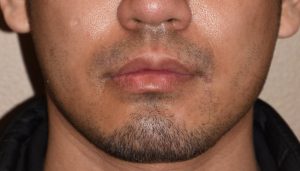
It can be a difficult decision in jaw augmentation as to determine whether one should use standard implants or jump right to a custom jawline implant design. The best way to really make that decision requires a combination of a 3D CT scan and computer imaging. How much bony asymmetry exists, if any, and what is the aesthetic jaw shape goal? (could it even be achieved with standard implants) Putting more thought up front will help one make a better treatment choice decision. As a general rule the question is never whether a custom jawline implant approach is best…but how close could the use of standard implants come to what a custom implant approach does.
Case Highlights:
1) Standard chin and jaw angle implants are prone to asymmetries, particularly of the jaw angle areas.
2) Replacement of standard chin and jaw angle implants with a custom jawline implant provides a more assured symmetry between the two sides of the lower jaw.
3) More careful preoperative planning helps make a more informed decision as to the best jaw augmentation approach.
Dr. Barry Eppley
Indianapolis, Indiana

